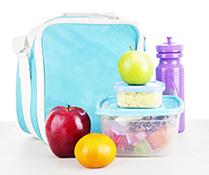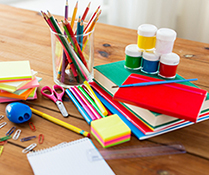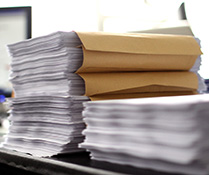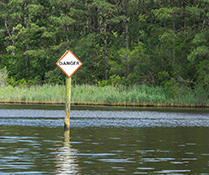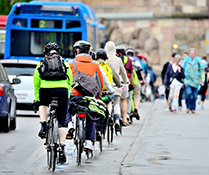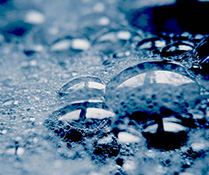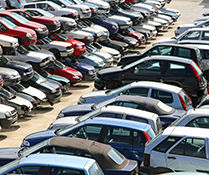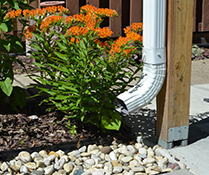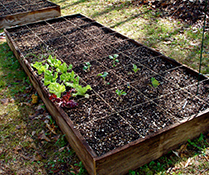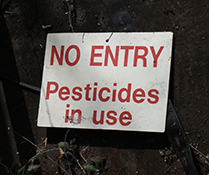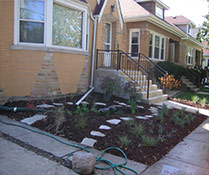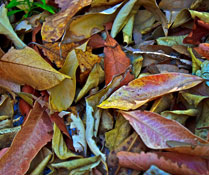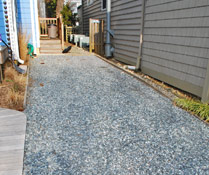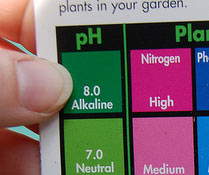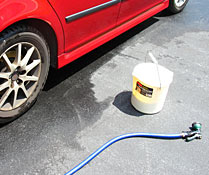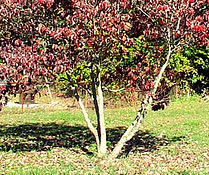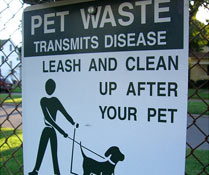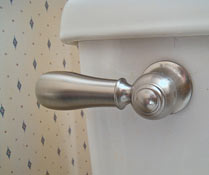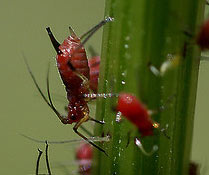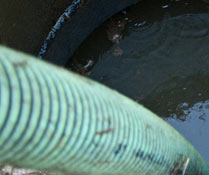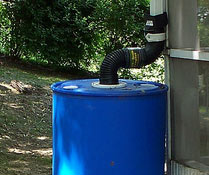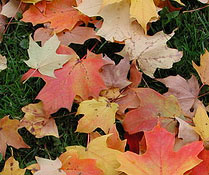
Foster environmental literacy
Look for ways to incorporate the environment into book reports or class book discussions. Eco-Fiction has a list of young adult books with environmental themes.

Foster environmental literacy
Teach students about issues such as climate change, forests and blue crabs to engage them with what’s happening in the environment where they live. Bay Backpack is a site designed to help teachers create environmental lessons for students and contains hundreds of resources on a variety of topics.

Swap clothing
Consider a clothing swap with classmates or donate clothes that don’t fit anymore. For schools with uniforms, set up a day to exchange skirts, pants and shirts that have been outgrown for larger sizes.

Encourage recycling
Check out your school’s recycling programs. Are recycling bins available and are people encouraged to use them? Make sure you know what can and can’t be recycled, and spread the word.

Reduce waste
Use a lunch box instead of plastic or paper bags for lunch. Buy reusable, sealed containers for drinks, sandwiches, snacks and other lunch items instead of re-sealable plastic bags.

Reuse school supplies
Before buying new school supplies, take a look at what you already have. Reuse notebooks, folders and other supplies that are still in good condition from previous years.

Reduce waste
When buying school supplies, look for items made out of recycled materials. For example, buy notebooks and pencils made from 100% post-consumer content.

How to Practice Gyotaku
This Japanese art of fish printing was developed over 100 years ago as a way for fisherman to record the size and species of their catch. (Read Article)

Save Fuel
Avoid hauling cargo on your roof rack. Transporting items on top of your car increases drag and uses more fuel.

Reduce Waste
Go paperless when possible. Email documents, share electronic files and review documents on a screen instead of printing to reduce the amount of waste produced.

Prevent Pollution
When doing maintenance work on your boat, make sure to stay on land instead of at the dock or in the water. If work is done off land, take precautions to keep waste from the water.

Reduce Sediment Pollution
Try to avoid using your boat in very shallow waters, where it can stir up sediment, harm sensitive habitats and put your propeller and hull at risk for damage.

Save Fuel
Take advantage of your car's cruise control! This feature helps maintain a constant speed, which can reduce fuel consumption.

Recycle Scrap Tires
Most states ban tires from being disposed of at landfills, but you can take scrap tires to shops or retailers that will reuse, recycle or retread them.

Reduce Emissions
To cut back on the emissions caused by commuting, encourage working from home or biking, taking public transit, carpooling or walking to work.

Save Energy
Encourage co-workers to shut down their computers, power off their monitors and turn off the lights when they leave the office for the day.

Prevent Spills
Because gasoline can expand and contract, it's best to only fill your boat's gas tank about 90 percent of the way full. This leaves room for gas to expand without overflowing the tank.

Use Toxic-Free Paints
In order to prevent fouling, some paints contain metals, which can damage marine life. Consider using a less toxic paint on your hull, and prevent paint from polluting the water by using non-abrasive cleaning materials.

Reduce Greywater
When you need soap on the water, make sure to use phosphate-free or biodegradable products. But whenever possible, save dish-washing and showering for land!

Share Resources
Living in an urban or metropolitan region can make it easy to avoid owning a car. Instead, utilize ride-sharing services, carpooling or public transit. By not driving, you can reduce your average carbon footprint.

Recycle Used Vehicles
If your car is nearing the end of its life with you, you don’t have to send it to the junk yard—you can donate it! Many non-profits accept cars as donations and will repair or recycle the vehicle.

Save Fuel
Rapid acceleration and frequent breaking increases fuel consumption, and can endanger yourself and others. Driving less aggressively lets you save fuel and keep safe.

How to Begin Birding This Winter
Cold weather doesn’t have to keep you from exploring nature in the Bay region. Winter bird watching is a great way to learn more about local wildlife and contribute to citizen science. (Read Article)

Reduce Runoff
Protect the soil below your gutter downspout by using drainage tiles or splash blocks to redirect and slow stormwater, or by letting downspouts flow into rain barrels, rain gardens or a permeable layer of rocks.

Prevent Erosion
Trying to build a garden on a sloped yard? To keep your topsoil from running into local waterways, you can build raised beds or create contours parallel to the slope of your yard.

Avoid Pesticide Pollution
If a pesticide spills or leaks, don't use a hose to clean up. Soak up the liquid with an absorbent material like sawdust or kitty litter, then sweep the material into a plastic bag and clean the area with a mixture of water and bleach.

Conserve Water
Let trees create their own mulch! Allow leaves and other plant matter to collect under your trees to maintain moisture, control temperature and prevent erosion.

Reduce Erosion
Planting groundcover on sparsely vegetated areas of your lawn discourages erosion and sediment runoff.

Save Energy
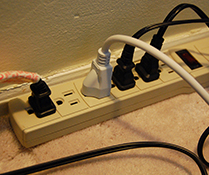
Unplug appliances like coffeemakers, toasters and televisions when no one is using them. For harder to reach outlets, plug devices into a power strip that can easily be switched off.

Reduce Hazardous Waste
Use mercury-free, non-toxic thermometers. Mercury thermometers should be disposed of at a household hazardous waste facility.

Conserve Water
To reduce water use in the kitchen, try washing fruits and vegetables in a large bowl or tub of water rather than under the faucet.

Conserve Water
Scraping or wiping off your dishes before putting them in the dishwasher allows you to skip the pre-wash cycle and save water.

Save Energy
Most of the energy required for washing clothes is spent heating water. To save energy, set your washing machine to cold water or the woolens setting.

Save Energy
Much of our home energy is supplied by coal, the burning of which sends pollutants into the air. If possible, set your thermostat at 68 degrees Fahrenheit in the winter and 78 degrees Fahrenheit in the summer to cut down on your energy use.

Use Reusable Products
Instead of single-use products, use reusable cloth items like canvas grocery bags, cloth napkins or cloth diapers.

How to Recycle Your Electronics
Each year, between 22 and 55 tons of electronics enter the waste stream. Most end up in an incinerator or a landfill, but you can help keep our air, land and water clean by recycling your mobile phone, personal computer and other electronic devices. (Read Article)

How to Pick a Crab

The summertime crab feast is a Chesapeake Bay tradition. Learn how to dig in with this guide to picking a blue crab. (Read Article)

How to Construct a Compost Pile
Composting is a cost-effective way to reduce your carbon footprint and put organic waste to work. Your homemade compost can then be used to feed household and garden plants. (Read Article)

How to Build a Rain Barrel
Rain barrels collect and store rainwater that runs out of a downspout or off of a roof, keeping runoff out of our rivers and streams. While unsafe for drinking, this water can be used to water plants or wash cars. (Read Article)

Create an Infiltration Trench
Infiltration trenches are one of the most effective ways to keep polluted stormwater from reaching local waterways.

Create a Rain Garden
Rain gardens can add value to your home and absorb more water than a conventional lawn.

Create a Stormwater Pond
Create a stormwater pond to collect runoff and protect downstream property owners from flooding.

How to Dispose of Leaves the Bay-Friendly Way
Fallen leaves don't have to end up in the landfill or the burn pile. Instead, consider mulching, composting or curbside collection. (Read Article)

Reduce Air Pollution
Use electric or manual lawn mowers and yard tools instead of gas-powered machines that can pollute our air.

Be Bay-Friendly at Work
Encourage your coworkers to be Bay-friendly by packing trash-free lunches, recycling office paper or using less water and electricity.

Prevent Invasive Species
Thoroughly clean your boat hull and all fishing gear before moving to another body of water.

Reduce Pesticide Use
Instead of applying chemical pesticides to your sidewalk or garden, use boiling water to kill weeds, ant colonies and other pests.

Keep Sewage On Board

Keep sewage on board your boat in a portable toilet or holding tank. Dispose of it only at an approved pump-out facility.

Improve Wildlife Habitat
Plant a wide variety of plants, trees and shrubs in your yard to attract different kinds of wildlife.

Prevent Soil Erosion
Spread mulch over bare ground to prevent soil erosion and stop the flow of polluted runoff from your lawn into local waterways.

Fish Responsibly
Follow fishing regulations like size or bag limits to help protect the Bay's fish stocks.

Avoid Paved Surfaces
Instead of asphalt or concrete, use porous surfaces like gravel or pavers to pave your driveway or patio.

Use Toxic-Free Personal Products
Use eco-friendly lotions, cosmetics and perfumes to keep toxic chemicals from washing off of our bodies and into our waterways.

Use Fertilizer Properly
Do not apply fertilizer to dormant lawns or frozen ground, where it could easily run off your property and into storm drains.

Use Toxic-Free Cleaning Products
Use eco-friendly cleaning products to keep toxic chemicals out of our waterways. Plain soap and water can rid surfaces of bacteria and are safer for our water supply.

Conserve Water
Instead of sprinklers, use soaker hoses or drip irrigation to water your lawn and garden.

How to Test Your Soil
A simple test can let you know what nutrients are in your soil, and what nutrients are lacking. Learn how to test your soil to help garden plants grow their best. (Read Article)

How to Drive the Bay-Friendly Way

Most of us can’t stop driving altogether. But there are lots of ways we can send less pollution into our air and water—and save a few extra gallons at the same time. (Read Article)

Fish Responsibly
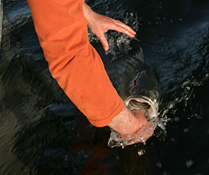
Practice proper catch-and-release fishing techniques to avoid harming and killing the Bay's fish.

Reduce Polluted Runoff
Make sure your home's downspouts drain onto grass or gravel rather than paved driveways or sidewalks.

Test Your Soil
Test your soil to determine how much fertilizer—if any—your lawn needs and the best time to apply it.

Drive Less

When possible, walk, bike or take public transportation to reduce vehicle emissions that can pollute our air and water.

Reduce Emissions
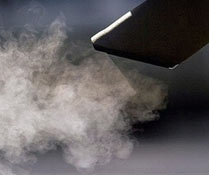
Avoid letting your car idle. Idling for even 10 seconds can waste fuel, damage your engine and pollute our air and water.

Stash Your Trash

Stow and secure used bags, bottles, fishing lines and other trash on your boat so litter doesn't fall into the water.

Don't Overapply Fertilizer

Use only the amount of lawn fertilizer you need. Twice the product won't make your lawn twice as green!

Prevent Fuel Spills

Prevent fuel spills by using a funnel and not "topping off" when you fill your boat's fuel tank.

Recycle Used Motor Oil
Properly dispose of used motor oil and antifreeze. Many gas stations and landfills have oil recycling programs.

Prevent Invasive Species
Never dump bait or aquarium species into a storm drain or body of water. Introduced species can become invasive.

Fix Car Leaks
Fix car leaks so engine fluids like oil and antifreeze don't drip onto the ground and run off into local waterways.

Conserve Water

Put a bucket in the shower to catch water as it warms up. Use the extra water for plants or pet bowls.

Compost Kitchen Scraps
Instead of throwing kitchen scraps down the garbage disposal, compost them to create a rich soil for potted and in-ground plants.

Clean Your Boat Properly
Use extreme caution when painting and cleaning your boat to avoid polluting the water.

Reduce Polluted Runoff
Wash your car on grass or gravel rather than pavement so soapy, grimy wash water won't run off your property.

Join a Carpool
Carpool to work or school to reduce vehicle emissions that can pollute our air and water.

Avoid Bay Grass Beds
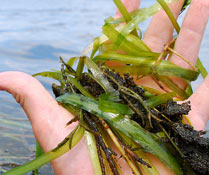
Steer clear of bay grass beds in shallow waters to avoid harming this critical habitat and food source.

Start an Environmental Club
Start or join an environmental club at your school to help raise awareness of Bay-related issues.

How to Choose and Use Native Plants

Planting native plants is an excellent way to increase wildlife habitat and help the Chesapeake Bay. Learn which trees, shrubs and flowers are native and how to choose the best plants for your yard. (Read Article)

Plant Trees and Shrubs
Plant more trees and shrubs in your yard to reduce erosion, capture runoff and provide habitat for wildlife.

Use Deicer Properly
Apply no more than the recommended amount of deicer to melt ice on your steps or driveway.

Properly Dispose of Waste

Encourage your marina owner to maintain an adequate pump-out facility if one is not available.

Use Pesticides Properly
Never use more pesticides than you need. Take care to store chemicals properly so containers do not leak.

Fix Leaky Faucets
Fix leaky toilets and faucets. A dripping faucet can waste 20 gallons of water per day.

Dispose of Chemicals Properly
Follow safe (and legal) disposal methods for household chemicals like paint or motor oil.

Maintain Your Septic System
Do not plant trees or shrubs near your septic drain field. Roots clog septic drain lines and cause overflows.

Dispose of Medicine Properly
To keep medicine out of our waterways, don't pour expired or leftover drugs down the sink or flush them down the toilet. Instead, return unused medicine to a consumer drug return location or foul your medication with coffee grounds or cat litter and put it in the trash.

Pick Up Pet Waste
Pick up after your pet. Pet waste contains nutrients and bacteria that can wash into local waterways if left on the ground.

Conserve Water
Put a sand-filled jug in your toilet tank. You'll save about one half-gallon of water with each flush.

Reduce Pesticide Use
Make your own garden insect repellents using common household items like garlic, vinegar and cooking oil.

Maintain Your Septic System
Have your septic system pumped out every three to five years to prevent accidental sewage overflows.

Plant Trees and Shrubs

Plant a buffer of trees and shrubs around the edge of your property to capture polluted runoff.

Install a Rain Barrel
Install a rain barrel underneath your home's downspout to capture rainwater from your roof. You can use this water to keep your garden green.

Keep Fertilizer Off Hard Surfaces
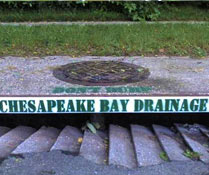
Keep lawn fertilizer off hard surfaces like walkways and driveways, where it can easily wash into storm drains.

Don't Use Fertilizer as a Deicer
Never use lawn fertilizer as a deicer. It contains nutrients that can run off your property and pollute local waterways.

Compost Fallen Leaves
Instead of spending hours raking, blowing and bagging fallen leaves, try composting them instead.

"Grasscycle" Lawn Clippings

Instead of fertilizing, leave leftover grass clippings on your lawn for a natural source of nitrogen.

Use Safer Pesticides

Use weed and insect-control products that contain plant-derived, non-toxic ingredients.

Conserve Water
Water your lawn and garden in the early morning or early evening to reduce evaporation and save water.









